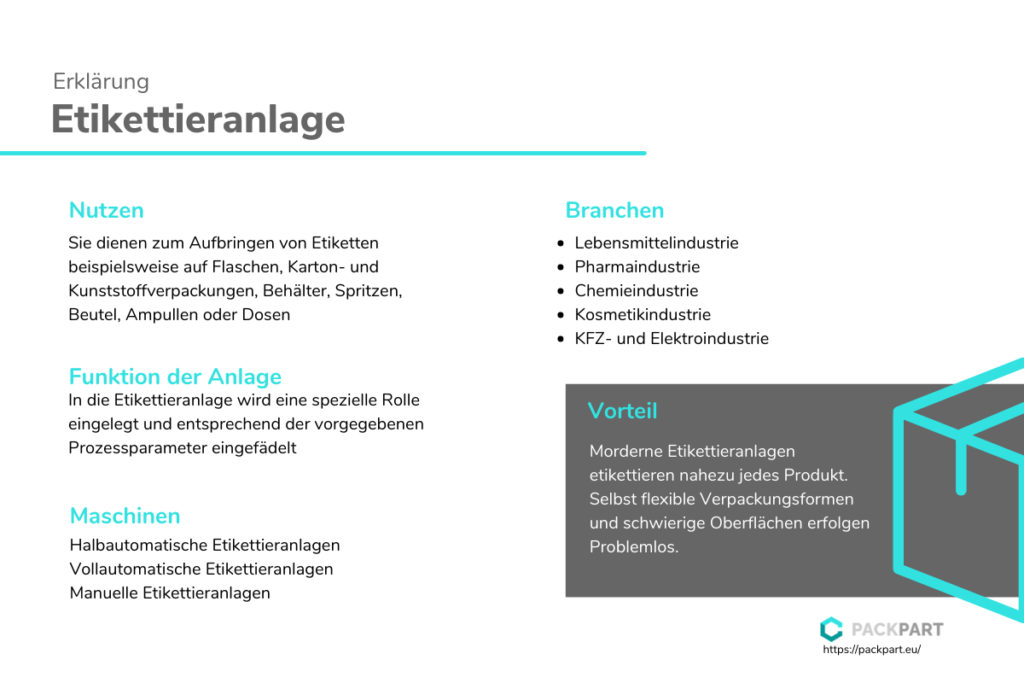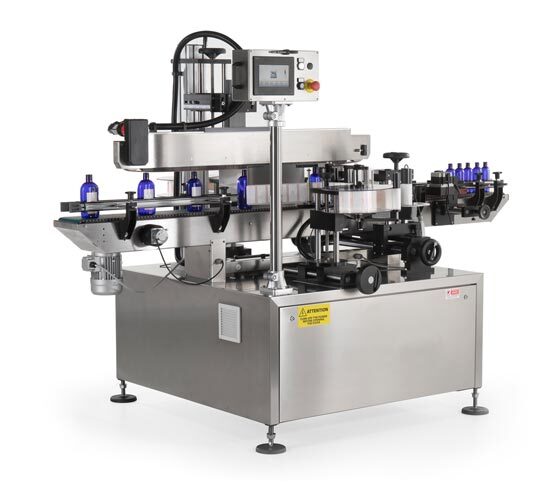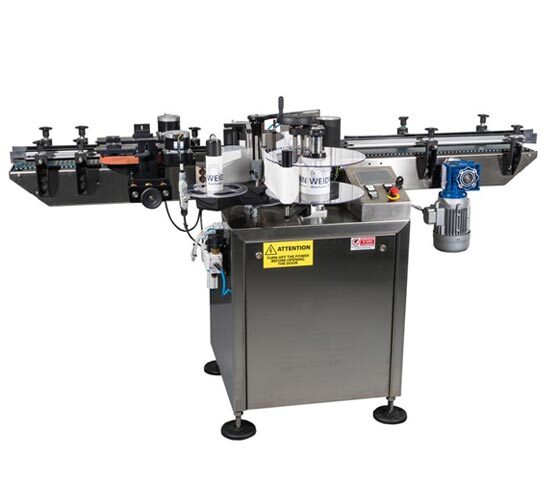Labeling equipment is used in production lines in all industries. Sooner or later, in a developing company, there comes a time when the production volume increases to such an extent that manual labeling of products becomes unfeasible and too expensive. By using labeling machines, the labeling process can be semi- or fully automated. This saves costs and enables faster and more accurate labeling of products.
What is a labeling machine?
Labeling machines are manual, semi-automated or automated machines that perform the process of applying a label to a product or packaging. The label is the most important design and information element of the packaging. The result of the subsequent sales figures strongly depends on the appearance of the label and quality of its application. With the help of labeling machines, the labels can be applied to the desired places, whether wrap-around, over-corner or 2-sided labeling – there are no limits to the possibilities.
Labeling machines are used to apply labels, for example, to bottles, cardboard and plastic packaging, containers, syringes, bags, ampoules or cans. The configuration of the equipment depends on the location to be labeled and the type of label. Labeling machines can be equipped with several labeling stations of different types. Modern labeling machines are modular in design. This allows quick and convenient replacement of individual labeling stations.
What synonyms are often used?
Many synonyms are used for labeling equipment, despite the same mode of operation. Widely used are terms such as labeling equipment, labeling machines, labeling cells as well as automatic labeling machines.

Semi-automatic or fully automatic labeling systems? What is the difference?
Semi-automatic labelers are used for fast and precise labeling of small to medium product output and seasonal goods. Although such machines, in contrast to fully automatic labeling stations, require manual loading of the labeling device with products, they offer an increased degree of automation while reducing time and human resources (labeler-semiautomatic). Compared to the latter, automatic labelers are directly integrated into the production process and develop their full potential in continuous labeling runs with medium and large product batches (rotary machine). In addition to semi-automatic and fully automatic labeling machines, there are also manual labelers such as price labelers, which are well suited for mobile labeling with smaller quantities.
Semi automatic labeling machines
Companies with small or medium production volumes prefer to use semi-automatic labeling machines. The use of such a machine requires human intervention. Most often, the operator’s task is limited to bringing the goods to the labeler and placing them in a special area of the machine. The machine is then set in motion via an operating element and a label is applied.
Such labelers are easy to use and apply the label precisely. This is especially advantageous when the label is large or needs to be applied to a cylindrical object. There are several types of semi-automatic labelers:
- For products with straight edges – the applicator applies the label only to a flat surface and is well suited for boxes as well as rectangular bottles.
- For cylindrical objects – a special labeling roller reliably applies the label to a curved surface on bottles or cans, for example.
- Universal – with such machines the shape of the object is not important.
Fully automatic labeling systems
Fully automatic labeling machines handle the entire labeling process and are ideal for large production volumes. To automate the entire cycle, the labeling machine must be equipped with a label dispenser. In many models, a hot printer or thermal transfer printer for printing on film is also integrated. The labels are fed through a special roller conveyor and aligned on the rollers according to the specified parameters before being applied. A built-in photo sensor takes over the control of the correctness of the labeling. Faulty or damaged stickers are automatically removed. The labeler is controlled by a unified control system. With the help of this system, targeted and continuous monitoring of the process takes place.
How does a labeling machine work?
A special roll is inserted into the labeling machine and threaded according to the specified process parameters. The label can either already be printed or it is only printed within the labeling machine with the help of a print module.
With manual equipment, the label is applied to the product by hand. In semi-automatic and fully automatic labeling machines, this process is automatic.
The application of the label can be done according to different methods:
- Tamp-on labeling over the corner – the label is stamped onto the product by a dispensing arm.
- Blow-on labeling – the label is applied by compressed air without contact.
- Tamp-blow labeling – the label is first positioned, then blown off with compressed air.
- Wipe-on labeling – the label is wiped off with the help of a roller or brush.
The modern labeling systems can label almost any product. Even with flexible packaging shapes (e.g. bags) and difficult surfaces (oily, rough, etc.), labeling is carried out without any problems.
In which industries are the labeling systems used?
In order to meet different requirements from the industrial sector, manufacturers of labeling systems today offer application-specific solutions that can realize almost any labeling task. In this way, companies benefit from highly reliable and robust machines that can be integrated smoothly into the packaging and labeling process. Labeling systems have become indispensable in many fields of application, including palletizing stations and packaging lines, and are represented in almost all industrial sectors, such as the food, pharmaceutical, chemical, automotive, and electronics industries.
Types of labeling equipment
Bag labeling machines
With the bag labeler, bags or other flat products can be labeled quickly and precisely on the top side. In addition to bags with zip closure or flat or side-folding or block-bottom bags, magazines, books, etc. can also be labeled. With the help of an alignment aid, the product is brought to a stop and fed to the labeling belt in an aligned position. Rubberized tapes fix the bag and make the process more precise.
Bucket labeling machines
The bucket labeler can be used to label buckets or other round products/packaging materials quickly and precisely on the top or all around. The labeling machine is adapted to the exact specification of the labeling. Special systems are used to align the bucket and place it in the desired position. For example, handles can be taken into account in the alignment by means of individual position detection. The label is applied in the subsequent labeling station.
Canister labeling machines
With the canister labeler, canisters or other angular products/packaging materials can be labeled quickly and precisely on the outer surfaces or all around. The labeling machine is adapted to the exact specification of the labeling. Special systems are used to align the canister and place it in the desired position. Specifications in the application of the label can be taken into account by individual position detections in the Alrichtug. The label is applied in the subsequent labeling station.
Carton labeling machines
The carton labeling machine is designed for labeling a carton. The special feature is that cardboard boxes come in a wide range of heights and sizes. Carton labeling machines are specially designed to handle this difference in size. Labels can be applied to any surface, individually or across corners. The detailed orientation can be determined without any problems.
IIndustrial labeling machines
Especially the labeling of industrial goods requires specialized labeling equipment. Industrial goods come in all shapes and sizes. The labeling process is correspondingly demanding. Special solutions for labeling around the goods simplify your process. Various methods for applying labels can be integrated into the process.
Bottle labeling machines

The labeling machine is adapted to the corresponding bottle. It can be labeled all around, the sides or even the lid can be labeled. Depending on the customer’s requirements, many things are possible here.
Can labeling machine
Since cans are usually round and made of metal, you need a wrap-around labeler. This can also be labeled on a metal surface without any problems.
Ampoule labeling machine

Ampoules are very small, so the labeler must be designed specifically for these small containers.
Tube labeling machine
The tube is labeled either by applying the appropriate label or with the help of a sleeve. Labeling is somewhat difficult here, because the shape of a tube is not so easy to label.
Sleeve labeling machines
This is a sleeve film on which the desired print is already located. This film is then pulled over the container and shrunk or sleeved by heating. The film adapts perfectly to the container and decorates it with the desired print.


